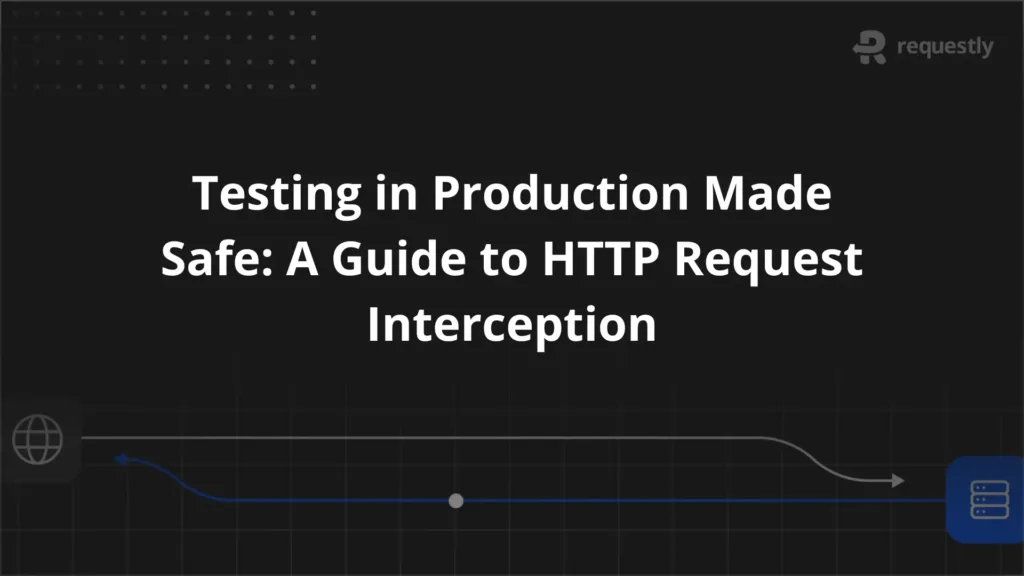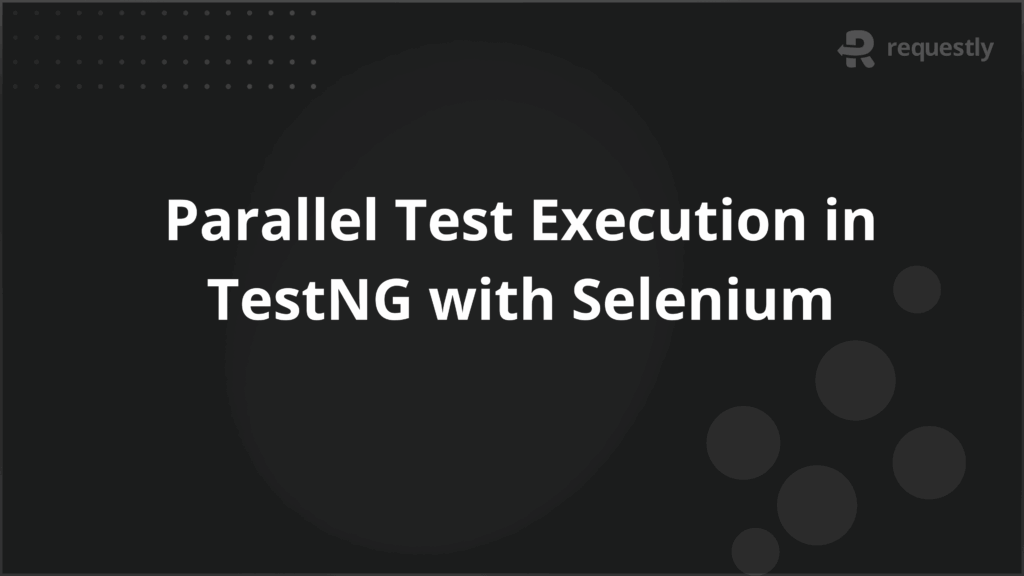What is API Virtualization: A Complete Guide for QAs


Modern applications depend heavily on APIs for internal and external communication. But in the real world, APIs are not always available, predictable, or complete when you need them. This creates a bottleneck in development and testing, especially when multiple teams rely on each other’s services.
API virtualization offers a practical solution. It allows teams to simulate the behavior of APIs that are not yet ready or are unreliable, enabling earlier testing, more consistent environments, and fewer external dependencies.
This article takes a detailed look at API virtualization, how it works, where it fits in the development lifecycle, how it compares with alternatives like mocks and stubs, and where it can fall short.
What Is API Virtualization in Testing?
API virtualization is the process of creating a simulated version of an API that mimics the behavior of the real service. These virtual APIs respond to requests just like the actual APIs would based on method, path, headers, query parameters, and even payload.
Unlike hardcoded mocks or stubs, virtual APIs can return dynamic responses, simulate errors, and even model partial business logic.
They’re especially useful when the actual API:
- Is under development or delayed
- Belongs to a third party and costs money to call
- Has limited access (e.g., only available in production)
- Is unstable or experiencing downtime
API virtualization helps developers and testers work without being blocked by the availability or readiness of the actual services.
Key Benefits of API Virtualization
Virtual APIs can reduce dependencies, support complex testing workflows, and help avoid common delays and costs in the software lifecycle.
Here are the key advantages of API virtualization:
- Parallel Development: Frontend developers can start building UI components based on the expected API contract, even if the backend service isn’t ready. Similarly, backend developers can test their service independently using virtual consumers.
- Early Test Coverage: Test automation engineers can start writing and running integration or system-level tests using virtual endpoints that mimic the real API behavior. This means test coverage grows as features are developed, not just after everything is built.
- Simulating Failures and Edge Cases: With a virtual API, you can easily simulate response codes like 401 (Unauthorized), 429 (Too Many Requests), or 500 (Internal Server Error). You can mimic slow responses to test timeout behavior or simulate missing data. These tests would be dangerous, costly, or impossible to trigger using live services, especially third-party ones.
- Cost Control: Many third-party APIs charge per call or have usage limits (e.g., payment gateways, SMS providers, geolocation services). During testing, especially in load or regression tests calling these services repeatedly can lead to significant costs. Virtual APIs allow you to perform the same tests at no cost and without affecting real-world accounts or quotas.
- Stable and Predictable Test Environments: Virtual APIs give you full control over what you receive in response to ensure that your tests are deterministic. This consistency is critical in CI pipelines where flaky tests can lead to reduced trust and delayed deployments.
- CI/CD Pipeline Integration: Virtual APIs can be integrated into continuous testing workflows, so tests don’t break when real services are slow, under maintenance, or being versioned. This is especially valuable in modern DevOps environments where deployments happen multiple times a day and tests must complete quickly and reliably.
- Faster Debugging and Troubleshooting: Developers can reproduce bugs or performance issues without relying on the state of a real API. You can craft very specific test scenarios by controlling the virtual API’s responses, helping isolate root causes more effectively.
How API Virtualization Works
Creating a virtual API involves more than returning a static response. Most modern tools follow a series of steps to simulate realistic behavior.
Step 1: Define API Behavior
The virtual service is configured to mimic the real API’s contract. This includes defining supported:
- HTTP methods (GET, POST, PUT, DELETE)
- URL paths and query parameters
- Request headers and body structure
Step 2: Match Incoming Requests
When the test or application sends a request, the virtualization tool compares it to the configured criteria. This may involve:
- Exact matches (e.g., specific path and query)
- Pattern-based matching (e.g., regex, wildcards)
- Conditional logic (e.g., “if header X-Token is missing, return 401″)
Step 3: Return a Configured Response
Once a request is matched, the tool sends back a predefined response, which can include:
- Status codes (200, 400, 404, 500, etc.)
- Payloads (JSON, XML, etc.)
- Response headers
- Artificial delays (to simulate latency)
Responses can be static or dynamic, and some tools support stateful behavior, e.g., POST requests affecting future GET responses.
Step 4: Optional Advanced Features
Advanced virtualization tools also support:
- Data-driven responses based on external files or datasets
- Stateful behavior to simulate resource creation and updates
- Fault injection for testing under failure conditions
Example: Simulating a Payment API
Let’s understand how API virtualization works with a quick example.
Scenario: You’re building a checkout page, but the real payment API isn’t ready yet and test calls to the third-party provider are expensive.
You create a virtual API with:
1. Endpoint: POST /payments
2. Behavior:
- If cardToken is “tok_visa”, return 200 OK with a mock transactionId
- If the token is missing, return 400 Bad Request
- If the amount exceeds $5000, return 402 Payment Required
This allows you to:
- Test both success and failure paths without relying on a real service
- Simulate network delays or timeouts
- Validate how the frontend handles different payment outcomes
The frontend team stays unblocked, and testers can automate key flows using consistent, predictable responses.
API Virtualization vs. Mocks, Stubs, and Fakes
API virtualization, mocks, stubs, and fakes are all used to simulate behavior during testing, but they serve different levels of the testing stack. Here’s a direct comparison across core attributes:
Attribute | Mock | Stub | Fake | Virtual API |
Testing Scope | Unit | Unit / Small Integration | Integration | System / End-to-End |
How It’s Used | Replace function or method inside the code | Provide predefined responses for known inputs | Use simplified working logic | Simulate a full API endpoint over HTTP/SOAP/etc. |
Behavior Type | Hardcoded, no logic | Static output, fixed behavior | Contains simplified business logic | Configurable, conditional, may be dynamic or stateful |
Protocol / Layer | Code-level only | Code-level only | In-memory or minimal implementation | Operates over network protocols like HTTP, SOAP, GraphQL |
Example Use Case | Return fake object for a service call | Stub a call to a not-yet-built module | In-memory DB to test without actual database | Simulate third-party payment service for testing checkout |
Strengths | Simple, fast, easy to isolate behavior | Lightweight, useful for early development | Allows basic integration testing with some logic | Closest to real API behavior; supports latency, errors, etc. |
Limitations | Limited to function-level tests | Doesn’t support dynamic behavior or full workflows | Can diverge from real behavior | Requires setup; must be kept in sync with real API specs |
When to Use API Virtualization in the Development Lifecycle
Below are the most common stages where API virtualization provides significant value, along with why it fits well in each phase.
1. During Early Development
At this stage, the backend service may not exist yet or may still be evolving. Frontend teams or consuming systems often depend on agreed-upon API contracts.
Use API virtualization to:
- Create a temporary service based on the expected contract (e.g., path, payloads)
- Allow client-side or consumer applications to start development immediately
- Reduce idle time caused by dependency on service availability
Example scenario: Frontend team needs to integrate a /users endpoint, but the backend hasn’t built it yet. A virtual API returns placeholder data so development and UI testing can continue.
2. During Integration Testing
Once components are integrated, it’s important to verify how they interact. But real APIs might be unreliable, slow, or return unpredictable results.
Use API virtualization to:
- Simulate real-world API behavior, including success, failure, and edge cases
- Create predictable, repeatable test environments for integration flows
- Test without relying on unstable or partially implemented APIs
Example scenario: You want to test how a checkout flow behaves if a payment service returns a 402 error. Rather than manipulate real systems, the virtual API can simulate this instantly.
3. During Automated Testing and CI/CD Pipelines
In continuous integration and deployment environments, you need fast, stable, and repeatable test runs. External APIs can introduce flakiness or long delays.
Use API virtualization to:
- Isolate your tests from third-party systems
- Run automated test suites without calling real services
- Simulate conditions that would otherwise be costly or slow to reproduce
Example scenario: Regression tests for the user onboarding flow should not depend on an actual SMS gateway. A virtual API returns a simulated “OTP sent” response with no external call.
4. When Testing Third-Party API Integrations
Real third-party APIs often have rate limits, access controls, or costs per call. This can be a barrier to testing and development, especially in lower environments like QA or staging.
Use API virtualization to:
- Avoid hitting usage caps or incurring unnecessary costs
- Safely simulate scenarios that the third-party provider doesn’t let you test directly
- Validate how your system behaves across various response types (e.g., error, malformed data)
Example scenario: You want to test behavior when a geolocation API returns no match or a malformed response. The real provider doesn’t support these test cases but your virtual API can.
5. During Load or Performance Testing
Testing how your system performs under pressure often requires calling dependent services repeatedly. Doing this with real APIs may be impractical or disruptive.
Use API virtualization to:
- Remove performance bottlenecks tied to external systems
- Ensure other services don’t become the limiting factor in your tests
- Focus on your application’s behavior, not external reliability
Example scenario: Simulate 10,000 calls to an internal pricing API without affecting the actual pricing engine or triggering alerts.
6. In Restricted or Isolated Test Environments
Sometimes, APIs are only available in production or secure zones and can’t be accessed from dev or QA environments.
Use API virtualization to:
- Emulate the behavior of restricted services without needing real access
- Ensure test environments reflect the correct workflows without violating security rules
- Continue feature testing even when upstream services are protected or offline
Example scenario: A finance system’s approval API is only available inside the production network. You use a virtual API in QA to mimic its responses so testing can continue.
Limitations of Virtual APIs in Real-World Testing
API virtualization has many advantages, but it also comes with limitations that teams must consider:
- No Business Logic Execution: Virtual APIs don’t perform actual computation or data processing. They simulate responses, not logic.
- Potential Contract Drift: If the real API changes but the virtual service doesn’t, tests may pass against an outdated simulation.
- Lack of Performance Insight: You can’t assess real response times, CPU usage, or database interaction with a virtual service.
- Incomplete Data Scenarios: Simulating complex, relational data or stateful user sessions is difficult and error-prone.
- Maintenance Overhead: Keeping virtual APIs up to date with their real counterparts requires diligence and tooling.
Troubleshooting Common Issues with Virtualized APIs
Even though virtual APIs offer control and flexibility, things don’t always go smoothly. Here are common issues teams face, why they happen, and what you can do about them.
1. The request doesn’t match any defined route
Sometimes, your test or application sends a request and the virtual API either returns the wrong response or no response at all. This usually means the incoming request doesn’t match any of the configured patterns.
Why this happens:
Matching rules are often too strict. The method, path, query parameters, headers, or body might differ slightly from what the virtual API expects.
How to fix it:
- Check the exact request sent by the application, including method (GET, POST, etc.), path, and headers
- Use wildcards or partial matching if requests vary slightly across environments
- If using body-based matching, ensure content types and formatting (like spacing or key order) are consistent
2. The virtual API returns the wrong response
You get a 200 OK, but the payload is incorrect or you’re getting a success when an error should be triggered.
Why this happens:
Multiple response scenarios are configured, and the matching rule may be too broad. Or, the logic to choose the correct response isn’t implemented correctly.
How to fix it:
- Make your matching rules more specific: match on header values, query parameters, or request body content
- Avoid overlapping rules for the same endpoint unless necessary
- Test each scenario in isolation to confirm the expected behavior
3. Responses are empty or malformed
The virtual API responds, but the payload is blank or contains invalid data that breaks your application.
Why this happens:
The response template may have syntax errors, unresolved variables, or missing required fields. In some tools, a missing default response also results in an empty payload.
How to fix it:
- Check the response body for placeholders like {{id}} and make sure the required variables are actually available
- Use a JSON or XML linter to validate the response format
- Always configure a fallback/default response for unmatched or misrouted requests
4. Tests pass with the virtual API but fail with the real one
Your automation suite works perfectly against the virtual API, but breaks when integrated with the actual service.
Why this happens:
The virtual API may not fully reflect the real API’s behavior. Common causes include contract drift, missing validations, or incomplete scenarios.
How to fix it:
- Regularly compare your virtual API definitions with the real API spec or documentation
- Re-run a subset of tests against the real API as a checkpoint
- Include test cases for authentication, schema validation, and error handling, even if they’re skipped in early testing
5. You can’t simulate state or user-specific behavior
For some test cases, you need the API to behave differently based on previous requests or user identity, but the virtual API always returns the same result.
Why this happens:
Most virtual APIs are stateless by default, meaning they don’t track any previous interactions or store context between requests.
How to fix it:
- Use scenario-based or rule-sequenced responses if your tool supports them
- Pass in values (e.g., user ID, token) in the request and match on those
- For more complex cases, configure the virtual API to load dynamic data from files or scripts
Why Use Requestly for API Virtualization?
Requestly is a developer tool that allows you to intercept, modify, and mock network requests in real time without changing your application code or backend setup. It works directly in the browser or as a desktop application and is commonly used by developers and testers to debug, simulate, and control HTTP behavior during development and testing.
Here are the key features of Requestly that help with API virtualization:
- Mock API responses: Create mock endpoints and serve custom responses for specific HTTP requests.
- Rule-based request matching: Match requests based on method, URL, headers, query parameters, or body content to control exactly which requests get virtualized.
- Simulate different HTTP status codes: Return error responses like 400, 401, 403, 404, 429, or 500 to test client-side error handling.
- Inject response delays: Add artificial latency to simulate slow APIs or network congestion.
- No backend dependencies: Run mock APIs directly in your browser or desktop without deploying any servers or writing backend code.
- Test dynamic behavior: Return different mock responses for the same endpoint based on incoming request data, which is useful for testing edge cases or conditional flows.
- Local and shared rule sets: Use rules locally during development or share them across teams to keep behavior consistent in QA or staging environments.
- Easy to maintain: Modify or disable rules in seconds through the easy to use interface. No need to rebuild or redeploy anything.
- Safe and reversible: Rules can be turned on/off without any permanent changes to the application or test environment.
Conclusion
API virtualization helps teams build and test software without being blocked by unavailable or unreliable APIs. It allows you to simulate real-world API behavior across success, failure, and edge cases, using controlled, configurable responses. This is especially valuable in environments where speed, isolation, and consistency matter.
Requestly offers a lightweight and developer-focused way to implement API virtualization without infrastructure overhead. Whether you’re working on frontend integration, automating tests, or simulating failure scenarios, Requestly gives you direct control over how APIs behave so you can test the right things, at the right time, with fewer blockers.

Contents
- What Is API Virtualization in Testing?
- Key Benefits of API Virtualization
- How API Virtualization Works
- Step 1: Define API Behavior
- Step 2: Match Incoming Requests
- Step 3: Return a Configured Response
- Step 4: Optional Advanced Features
- Example: Simulating a Payment API
- API Virtualization vs. Mocks, Stubs, and Fakes
- When to Use API Virtualization in the Development Lifecycle
- 1. During Early Development
- 2. During Integration Testing
- 3. During Automated Testing and CI/CD Pipelines
- 4. When Testing Third-Party API Integrations
- 5. During Load or Performance Testing
- 6. In Restricted or Isolated Test Environments
- Limitations of Virtual APIs in Real-World Testing
- Troubleshooting Common Issues with Virtualized APIs
- Why Use Requestly for API Virtualization?
- Conclusion
Subscribe for latest updates
Share this article
Related posts






















